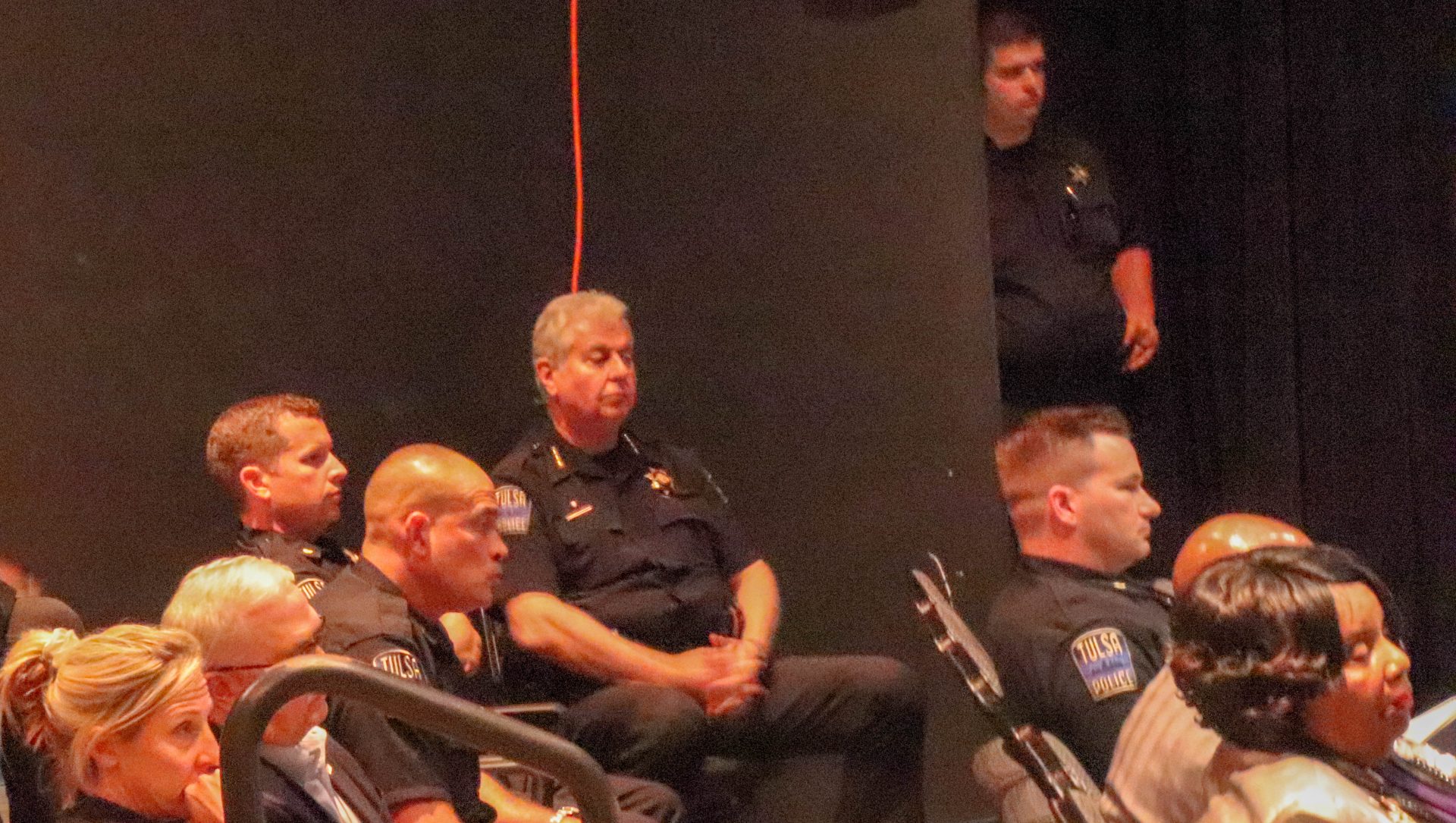
Tulsa police officers attended a special Tulsa City Council meeting.
Quinton Chandler / StateImpact Oklahoma


Tulsa police officers attended a special Tulsa City Council meeting.
Quinton Chandler / StateImpact Oklahoma
Following a number of high profile incidents of Tulsa police using force, a recent study found that race was not a significant factor in officers’ decisions.
Researchers from the University of Texas at San Antonio and the University of Cincinnati studied Tulsa to find ways to reduce the number of times police officers use force on civilians.
StateImpact’s Quinton Chandler asked Professor Michael Smith from the University of Texas at San Antonio how their findings can help Tulsa police in their encounters with the public.
Quinton Chandler: Thanks for joining us, Professor Smith. Tell me about your recommendations for the Tulsa Police Department.
Professor Michael Smith: That they expand their use of force reporting policy to capture what we know is to be the majority of force that’s used – low level kind of stuff.
One of the things that we didn’t really have information on that is important to know is, (were) … the citizens who were involved in these cases … under the influence of alcohol or drugs?
Did they have mental health issues? These are known predictors of force in other studies and we didn’t really have the data to understand the impact of those factors in Tulsa.
So one of our recommendations (was) that the (Tulsa Police Department) improve the the breadth and the depth of their data that they collect.
I think another important one that’s oftentimes overlooked is a recommendation that we made that they begin to capture instances where deadly force could have been used, but was not.
Police departments typically document pretty well instances where deadly force was used. But what we don’t know very much about are instances where it would have been authorized by law and policy, but the agency – the officers – didn’t use it.
That is a really important piece of information to know in order to compare against cases where deadly force was used. I think our final recommendation was, well, there are two of them.
One was the Tulsa PD begin to look at their canine policies (and) benchmark them against other sort of best practices for canine use nationally.
In the same vein, our recommendation is that they sort of look at their use of force policy in training and again, sort of compare it to known best practices and to adjust their policy and training accordingly.
Quinton Chandler: Tell me a little bit about the main goals of your broader research that Tulsa was filling a gap in.
Professor Michael Smith: So we have the narratives when officers use force. He or she writes a detailed narrative about what happened. So the officer says, ‘I did this and then the citizen did that, and then the citizen did this, and then I did that.’
So, we have these things broken down in great detail. So, if you think about the larger goals of the project: sort of understanding the factors that influence the use of force during arrests (and) in cases that (where) force was not used … understanding that sort of fine grained interaction between officers and citizens, we think is going to be a sort of a significant contribution to what we know about use of force nationally.
Quinton Chandler: Once you’ve finished kind of breaking down these steps that lead up to force, and understanding what causes police using force on civilians, what’s the next big question?
Professor Michael Smith: I mean, there’s been considerable national attention paid to the use of deadly force by police in the last five years since the shooting of Michael Brown in Ferguson, Missouri.
That sort of touched off, I think, a national conversation around the use of deadly force in particular and whether or not it’s driven by race. So, I think that’s an issue that continues to cry out for additional research.
The data that we’re suggesting that Tulsa begin to collect on instances where deadly force could have been used but was not is an important component to that research. Those kind of data don’t exist very, very frequently.
Certainly they don’t exist on a national level and most agencies still collect them either. But, it’s an important piece of that puzzle, right, of that deadly force puzzle in particular.
Quinton Chandler: Well, thank you so much, Professor Smith. I appreciate you hopping on the call and talking about your research.
Professor Michael Smith: You’re more than welcome.